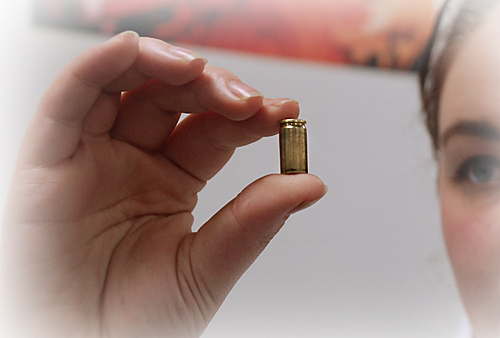Pioneering software will match bullets to the firing weapon
Wed, 15 Jan 2014 13:12:00 GMT
“...contrary to popular belief, it is not yet possible to establish whether separate bullets have been fired from the same gun...”

GUN crime investigations will be massively aided by new techniques pioneered at the University of Huddersfield, working in tandem with a leading forensics company.
Contrary to popular belief, it is not yet possible to establish quickly and infallibly whether or not separate bullets have been fired from the same gun.
“The sort of things you see on television programmes like CSI are a total fallacy,” according to Professor Liam Blunt, a director of the University’s EPSRC Centre for Innovative Manufacturing in Advanced Metrology.
“People tend to think that comparing bullets is like DNA matching, but it’s not. A 20 to 30 per cent success rate at matching is about as good as it gets.”
This is because the striations on spent bullets almost invariably have to be examined visually by a forensics expert using a microscope. Now Professor Blunt and his colleagues in the EPSRC Centre, one of the world’s leading centres of research in the science of metrology, are to work on developing software they have patented. When used in conjunction with an optical scanning device, it will quickly build up a map of scratches around the bullet and make instant comparisons with other bullets.
 When the technology is developed and on the market, it will be a breakthrough in forensics, and the EPSRC Centre is working closely with one of the world’s leading companies in the field. Forensic Pathways, whose managing director is the researcher Dr Richard Leary, has already provided financial backing to the University of Huddersfield’s research in bullet matching. Now it is to contribute funding for a PhD researcher to work on the project, supervised by Professor Blunt and his colleague Professor Paul Scott.
When the technology is developed and on the market, it will be a breakthrough in forensics, and the EPSRC Centre is working closely with one of the world’s leading companies in the field. Forensic Pathways, whose managing director is the researcher Dr Richard Leary, has already provided financial backing to the University of Huddersfield’s research in bullet matching. Now it is to contribute funding for a PhD researcher to work on the project, supervised by Professor Blunt and his colleague Professor Paul Scott.
In addition to the technical facilities at the EPSRC Centre, the research will have the invaluable aid of a database of hundreds of fired bullets and their markings.
This is the legacy of an earlier research project – a partnership between Professor Blunt and his colleagues, plus Forensic Pathways and the University’s Applied Criminology Centre.
“We did a large controlled test, firing 400 bullets, mixing them up and seeing if we could pick out which guns they were fired from. That’s how we know that existing systems for doing this are not very good!” said Professor Blunt.





 Print This Page
Print This Page